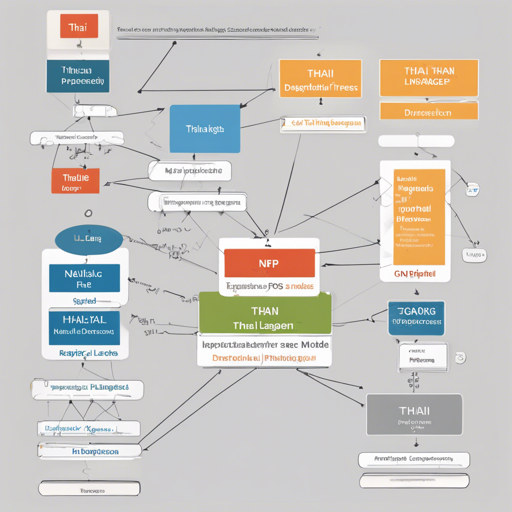Welcome to your handy guide on utilizing the powerful RoBERTa model for Thai language tasks such as Part-Of-Speech (POS) tagging and dependency parsing! This guide will walk you through everything you need to get started and troubleshoot common issues.
Understanding the Model
The RoBERTa model you’ll be working with is derived from roberta-base-thai-spm and has been specifically pre-trained on Thai Wikipedia texts. Its primary function is to categorize every word in a sentence based on Universal Part-Of-Speech (UPOS) tagging, which means it assigns standard grammatical labels to words like noun, verb, etc. So, think of it as a highly meticulous librarian organizing the books (words) based on the genre (part of speech).
Step-by-Step Guide to Use the Model
- Install the necessary libraries:
- Import the libraries in your Python environment.
- Load the tokenizer and model.
- Input your Thai text and tokenize it.
- Perform the classification and print the results.
Implementation Example
Below is a straightforward code snippet to illustrate how you can work with the model:
py
import torch
from transformers import AutoTokenizer, AutoModelForTokenClassification
# Load tokenizer and model
tokenizer = AutoTokenizer.from_pretrained("KoichiYasuokaroberta-base-thai-spm-upos")
model = AutoModelForTokenClassification.from_pretrained("KoichiYasuokaroberta-base-thai-spm-upos")
# Your Thai text
s = "หลายหัวดีกว่าหัวเดียว"
# Tokenizing the text
t = tokenizer.tokenize(s)
# Getting the predictions
p = [model.config.id2label[q] for q in torch.argmax(model(tokenizer.encode(s, return_tensors='pt'))[logits], dim=2)[0].tolist()[1:-1]]
# Displaying results
print(list(zip(t, p)))
Alternative Usage with ESUPAR
You can also use the ESUPAR library for similar tasks. Here’s how:
python
import esupar
# Load the model
nlp = esupar.load("KoichiYasuokaroberta-base-thai-spm-upos")
# Analyze the Thai text
print(nlp("หลายหัวดีกว่าหัวเดียว"))
Troubleshooting Common Issues
While using this model, you might encounter some bumps in the road. Below are some issues and their possible solutions:
- Import Errors: Make sure you have installed the necessary libraries. Use the command:
pip install transformers esuparin your terminal. - Model Loading Errors: Ensure that you have an active internet connection, as loading the model for the first time requires downloading from the repository.
- Wrong Predictions: If the output does not seem correct, check the input string for errors, or review the documentation to ensure correct usage.
For more insights, updates, or to collaborate on AI development projects, stay connected with fxis.ai.
Conclusion
At fxis.ai, we believe that such advancements are crucial for the future of AI, as they enable more comprehensive and effective solutions. Our team is continually exploring new methodologies to push the envelope in artificial intelligence, ensuring that our clients benefit from the latest technological innovations.

